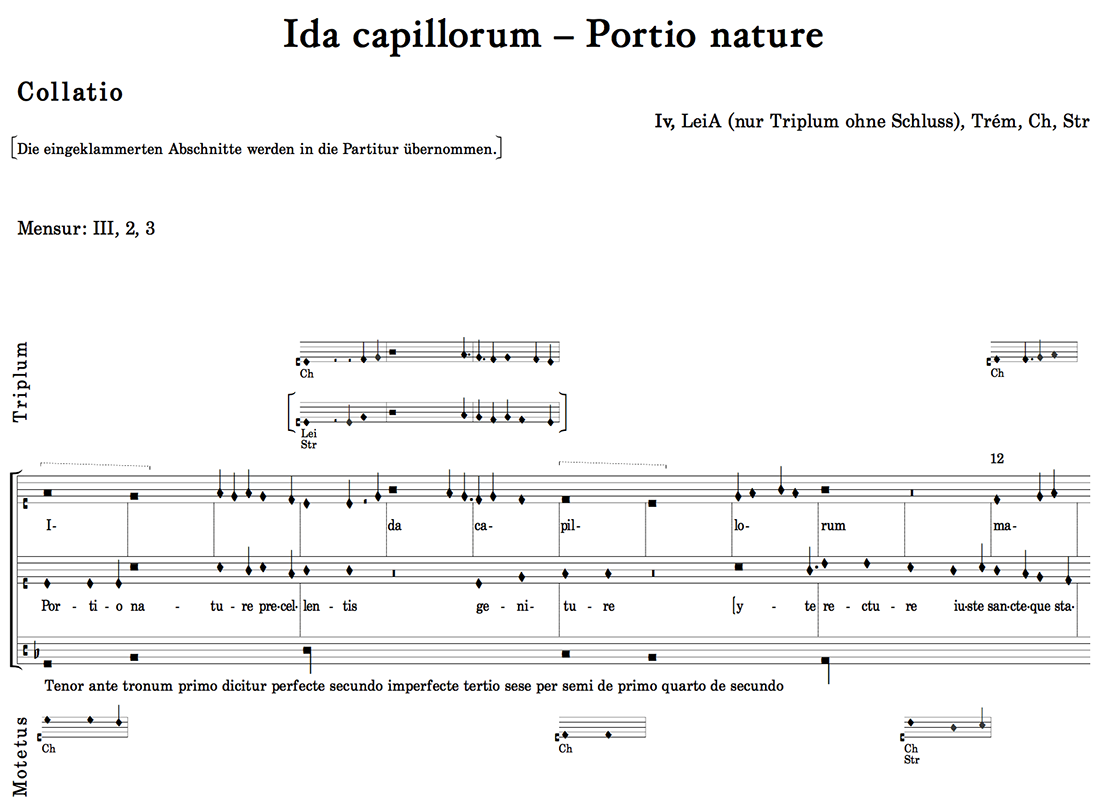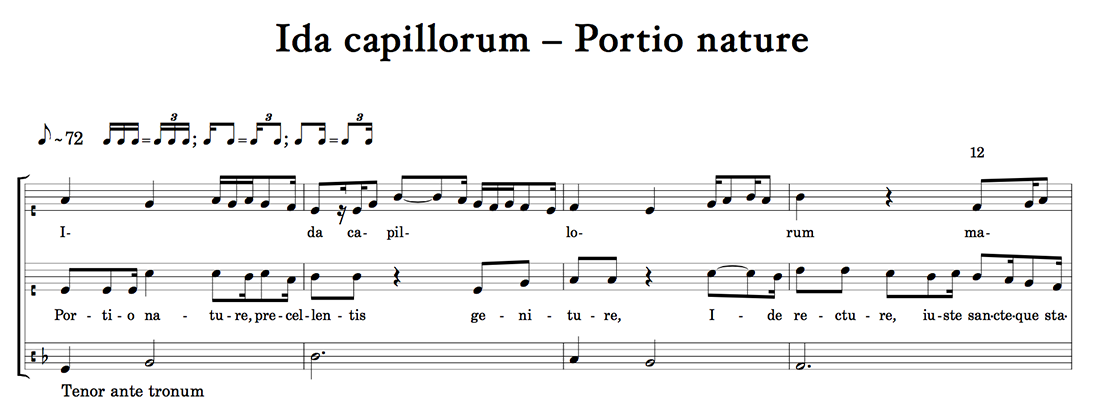Working Methods
|
Olaf Raitzig not only studied the rules of the medieval notational systems, he also familiarized himself with methods of source criticism, paleography and mathematical statistics. He worked with Willi Apel’s “The Notation of Polyphonic Music”, studied the precise transcriptions of Machaut by Friedrich Ludwig and read the pertinent works of other music scholars. His main focus lay on the early sources of the compositions. Of the roughly 25 known sources several important manuscripts were available to him in copies, for example the “Codex Ivrea”. |
His working method is best illustrated using the example of the wonderful and at the time highly famous motet “Ida capillorum – Portio nature” (which is generally attributed to the musician Egidius de Pusiex, but which on the basis of his analyses Olaf Raitzig rather assumed to be written by Enricus Helene). Olaf Raitzig started out by studying all the sources in facsimile as well as information gleaned from secondary literature. Even the original sources differ from each other in a number of passages; this may be due to musical modifications in various places or to faulty notation. Triplum, motetus and tenor of the motet from the Ivrea source begin as follows: |
|
First he made a rough transcription, and then he prepared a “collatio”. The term “collatio” was used by Olaf Raitzig for the working stage between the raw transcription and the finished score. At this stage the rhythmic and melodic variants resulting from a comparison of the sources for a specific motet are collected, sorted, and discussed. The transcription is based on the Ivrea manuscript, which serves as the principal source. Olaf Raitzig arranged the notes in tabular form according to their duration. The individual taleae are placed one below the other so that the formal design and the isorhythmic structure are easily traceable. Variants of the readings in Ivrea were inserted with their references in ossia staves. All the ligatures were resolved and are indicated by brackets only above the texted parts. In the untexted tenor parts Olaf Raitzig omitted the brackets. Beginning of the “collatio” |
As a next step Olaf Raitzig considered which source variant was most suited for the score, a laborious and demanding task that presupposes a high degree of compositional expertise and excellent musical sensitivity. Notational segments that were taken from other sources and inserted in the score are marked by brackets in the ossia staves of the “collatio”. The result of this analysis was always tried out musically and inserted into the score only after a successful trial, “for only through intelligent experimenting can one slowly approach the facts that the sources leave us in doubt about.” The result is a score that is constructed from the various sources in the best possible fashion. In addition, Olaf Raitzig was concerned about presenting the notational text in a pleasing and musically meaningful manner, including suggestions for the appropriate tempo, the placement of bar lines and the text underlay. Beginning of the Score Today there are well-trained music ensembles that are happy to sing from the original sources and don’t really need a transcription. Still, for the reasons given above, taking a look at the scores continues to be worthwhile. That way the motets may well end up sounding even better. |





